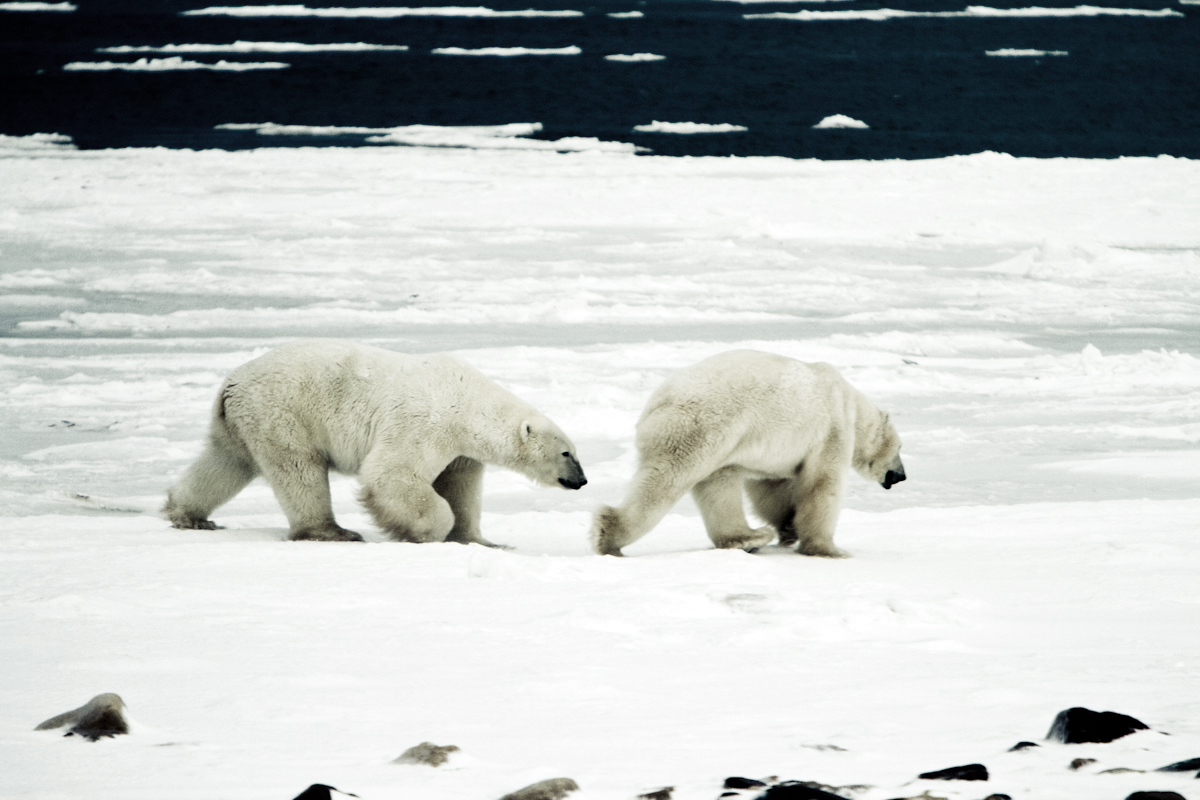
In 2018, Smith and a colleague analysed 682 human-bear conflicts in Alaska. However, he says "bear bells", which ring as you walk, may not be loud enough to get the bear's attention. Raising your voice as you talk and clapping your hands are the most effective ways of alerting bears, Smith says. This advice applies to all three north American bear species, says Smith: black bear, brown bear including grizzlies, and polar bear. "As it turns out they (all three bear species) rarely prey on people. "Making our presence known is the single most important thing we can do." "If you telegraph your presence, and thereby avoid surprising them, they usually obligingly get out of the way, from this incoming potential interaction," he says. One of his main recommendations is to make sure the bear can hear you approaching. He says he has had "hundreds if not thousands of bear encounters". Smith has spent 31 years conducting field work among bears. "It's usually because we surprise them that we set off these attacks." "Bears are by their nature large predators, but they don't particularly prey on humans," says Tom Smith, a professor of wildlife sciences at Brigham Young University in Provo, Utah. Such insights into bear behaviour can be crucial when it comes to preventing conflicts, she and other experts say. A wider 2023 analysis of attacks by all large carnivores showed a similar pattern of largely defensive attacks by bear species (including American black bears, Asiatic black bears, brown bears, sloth bears and polar bears). They found that the attacks tended to be defensive: the bear was startled in a surprise encounter, and then attacked. In a 2019 study, Bombieri and her colleagues analysed more than 600 brown bear attacks around the world. "Data tell us that in all areas where bears and people co-exist the risk of attacks exists, so we need to take this topic seriously," says Giulia Bombieri, a specialist in human-wildlife conflict at Muse, the Science Museum of Trento in Italy. Near human settlements, they often acquire a taste for garbage, bringing bears and humans into perilous proximity.Research from around the world suggests that co-existing with large predators always comes with some risks.

Polar bears are attractive and appealing, but they are powerful predators that do not typically fear humans, which can make them dangerous. In fact, male polar bears may even kill young of their species. Females aggressively protect their young, but receive no help from their solitary male mates. Young cubs live with their mothers for some 28 months to learn the survival skills of the far north. They give birth in winter, usually to twins. Breeding and Behaviorįemales den by digging into deep snow drifts, which provide protection and insulation from the Arctic elements. These Arctic giants are the masters of their environment and have no natural enemies. If the opportunity presents itself, polar bears will also consume carcasses, such as those of dead whales. They also stalk ice edges and breathing holes. In search of this quarry they frequent areas of shifting, cracking ice where seals may surface to breathe air. These powerful predators typically prey on seals. But under their fur, polar bears have black skin-the better to soak in the sun's warming rays. The bear's stark white coat provides camouflage in surrounding snow and ice.

Fur even grows on the bottom of their paws, which protects against cold surfaces and provides a good grip on ice. Polar bears live in one of the planet's coldest environments and depend on a thick coat of insulated fur, which covers a warming layer of fat. Some polar bears have been seen swimming hundreds of miles from land-though they probably cover most of that distance by floating on sheets of ice. They are very strong swimmers, and their large front paws, which they use to paddle, are slightly webbed.

Polar bears roam the Arctic ice sheets and swim in that region's coastal waters.


 0 kommentar(er)
0 kommentar(er)
